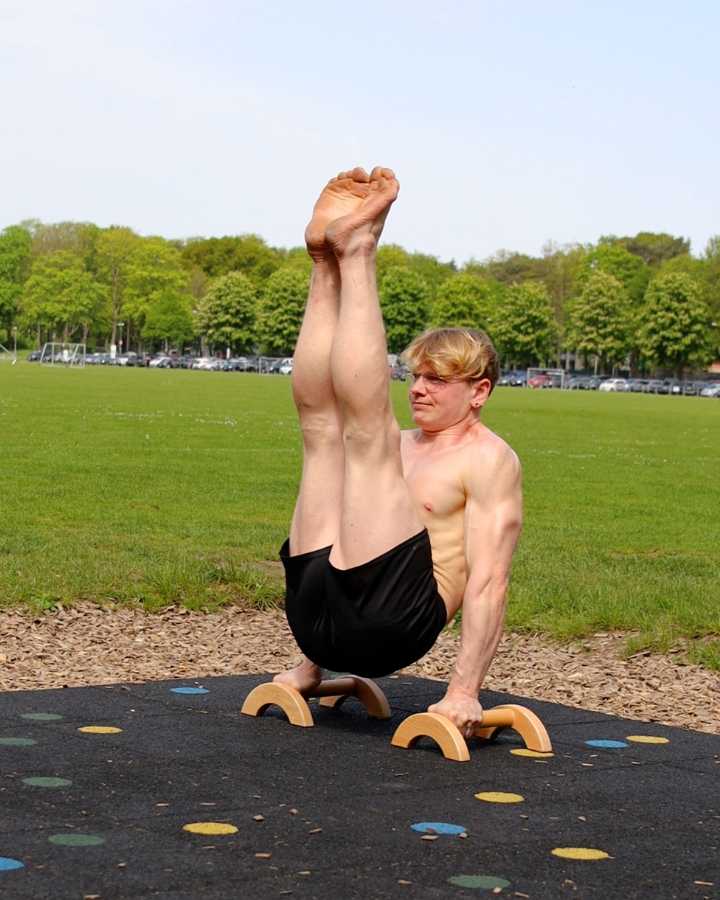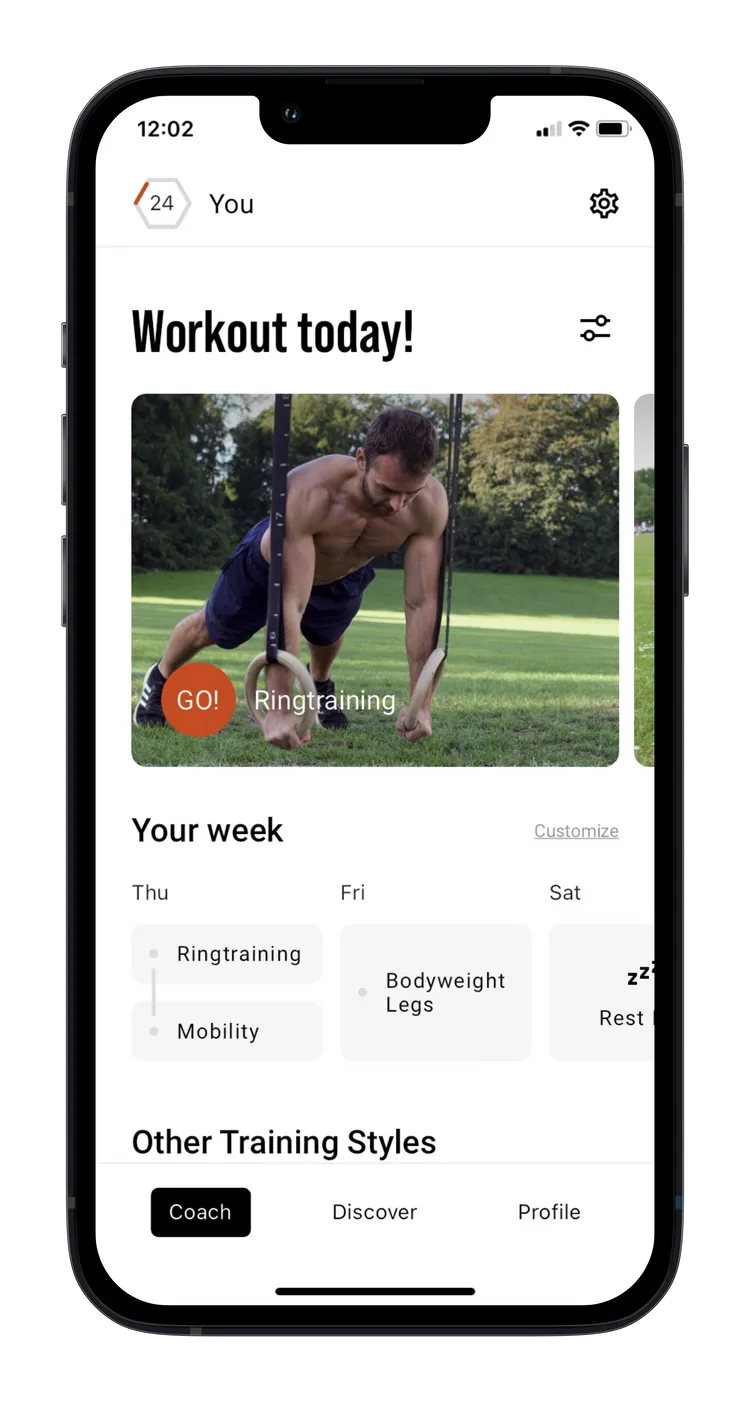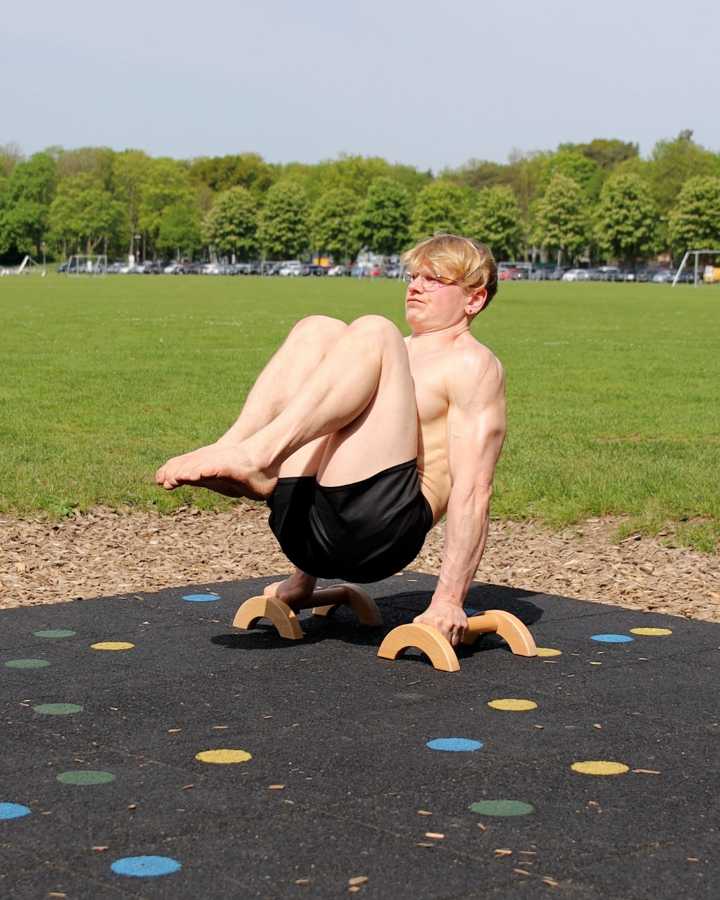V-Sit with parallettes
The V-Sit is a challenging exercise that requires significant strength in the abdominal muscles, hip flexors, and high flexibility in the hamstrings. The body forms a “V” shape by lifting the legs and upper body off the ground and holding them in the air. This exercise is a more advanced variation of the L-Sit, as it demands greater core tension and flexibility. The V-Sit is often confused with the Boat Pose.
Necessary equipment
V-Sit with parallettes - the correct execution
- Place the parallettes or your hands firmly on the floor, about shoulder-width apart
- Sit between the parallettes or place your hands directly next to your hips on the ground
- Push through your hands to lift your body completely off the floor
- Keep your arms straight and actively pull your shoulders down
- Fully extend your legs and slowly raise them into a vertical position, forming a "V" shape with your body
- Engage your core muscles tightly to stabilize the position
- Hold this position statically, focusing on steady breathing and maintaining tension throughout your entire body
The exercise V-Sit is intended to be used as a hypertrophy exercise.
Which muscles are trained by V-Sit?














Primary trained muscles for V-Sit
Abs - The rectus abdominis, also known as the "abs," runs vertically along the front of the abdomen. It is responsible for bending the torso forward, such as during sit-ups, and lifting the pelvis. This muscle stabilizes the torso, supports the spine, and helps maintain good posture.
Triceps - The triceps brachii muscle is located at the back of your upper arm. It extends your arm at the elbow and also helps move the arm backward.
Front Delts - The front part of the deltoid muscle, also known as the anterior shoulder, is located at the front of the shoulder. It is primarily involved in the forward movement of the arm, such as lifting the arm forward. It also assists in the internal rotation of the arm. This muscle is engaged in activities that involve lifting objects in front of the body or pushing forward.
Secondary trained muscles for V-Sit
Quadriceps - The quadriceps femoris is the large muscle at the front of your thigh. It extends your knee.
Upper Back - The muscles in the upper back, including the trapezius and rhomboid muscles, help move and stabilize your shoulders. They pull the shoulder blades together and support posture.
Latissimus - The latissimus dorsi is a large muscle in your back that helps you pull your arm down and back. It also supports breathing and stabilizes the spine.
Alternative variants of V-Sit with parallettes:
Tuck V-Sit with parallettes
In contrast to the V-Sit with straight legs, the tucked V-Sit involves bending the legs, making the exercise significantly easier due to the shorter lever arms. Parallettes provide stable support and reduce strain on the wrists. This variation is ideal as a preparatory exercise for building the strength and technique needed for the V-Sit with straight legs.
Necessary equipment
Tuck V-Sit with parallettes - the correct execution
- Place the parallettes or your hands firmly on the floor, about shoulder-width apart
- Sit between the parallettes or place your hands directly next to your hips on the ground
- Push through your hands to lift your body completely off the floor
- Keep your arms straight and actively pull your shoulders down
- Bend your knees and pull them toward your chest, so your thighs are parallel to the floor
- Lean back slightly to balance your center of gravity and maintain balance
- Hold the position statically, focusing on steady breathing and maintaining tension throughout your entire body
This could also be interesting
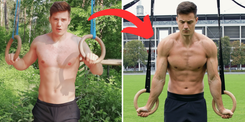
Calisthenics Body Transformation – How to Build a Strong, Lean, and Athletic Physique
Transform your body with Calisthenics! Build muscle, burn fat & achieve a shredded physique with bodyweight training. See real before & after results!

The Best Fitness Apps in 2025: Our Top 10 Recommendations
Don’t miss the best fitness apps of 2025: surprising favorites, free options, and perfect tools for your workouts. Find the ideal app today!
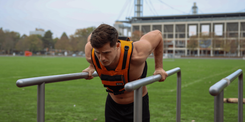
Complete Calisthenics Skills List – 40+ Exercises from Beginner to Pro
Which calisthenics skills should you learn first? And which ones will really help you progress? In this article, you’ll find a complete list of over 40 exercises – from the very basics to the toughest moves for professionals. Each exercise comes with instructions, so you can immediately integrate them into your training.
